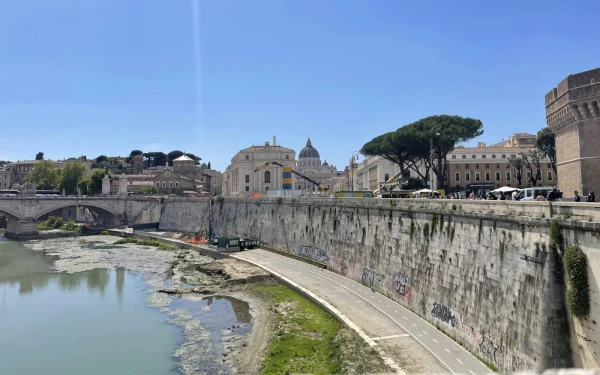Workers in Rome discovered a centuries-old skeleton during a construction excavation near the Vatican, for one of the construction projects for the Catholic Church’s 2025 Jubilee.
The skeleton was unearthed during excavations to create an underground highway near Castel Sant’Angelo, which will create a pedestrian path leading to St. Peter’s Basilica.
Receive the main news from ACI Prensa by WhatsApp and Telegram
It is increasingly difficult to see Catholic news on social media. Subscribe to our free channels today:
Initial research found that the bones likely date from sometime between 1600 and 1800, according to Italian media reports. The Italian archaeological authority plans to carry out additional analysis.
Construction at the site has continued as planned after the skeleton was removed, according to Rome’s public works department.
Workers are facing a tight deadline on one of the most ambitious construction projects underway in Rome, in preparation for the Jubilee Year.

The project of more than 86 million US dollars in Piazza Pia will connect Castel Sant’Angelo – a historic structure originally built by the Roman emperor Hadrian but later used as a papal fortress – with St. Peter’s Square, moving the ancient highway completely underground.
Rome Mayor Roberto Gualtieri told EWTN that he believes the transformation of Piazza Pia will make it “one of the most beautiful squares in the world.”
Pope Francis has proclaimed that the “Jubilee of Hope” will begin on Christmas Eve 2024. The Vatican and the city of Rome expect some 35 million people to flock to the Eternal City for the first ordinary jubilee since the Great Jubilee of the year 2000.
With more than 350 works planned around the ancient city, in preparation for the Jubilee of 2025, there could be other unexpected archaeological discoveries.
Three human skeletons were found during construction work in 2019 in a Rome metro station and were later found to date back to the 1st century BC.
Translated and adapted by the ACI Prensa team. Originally published in CNA.

